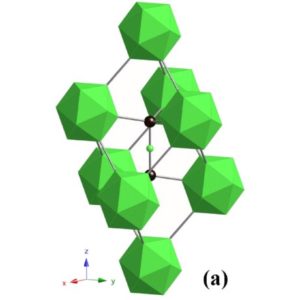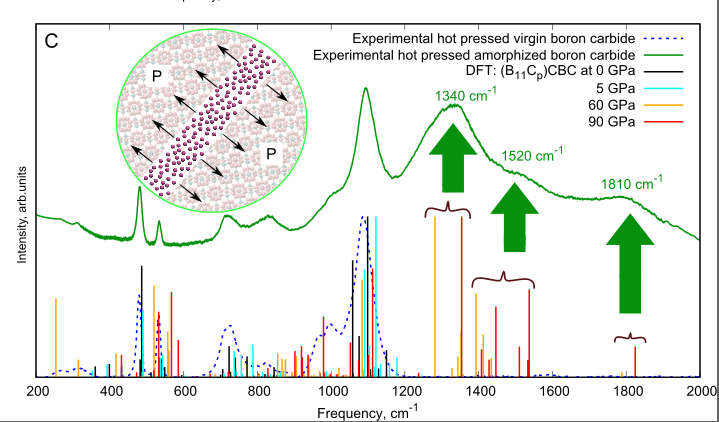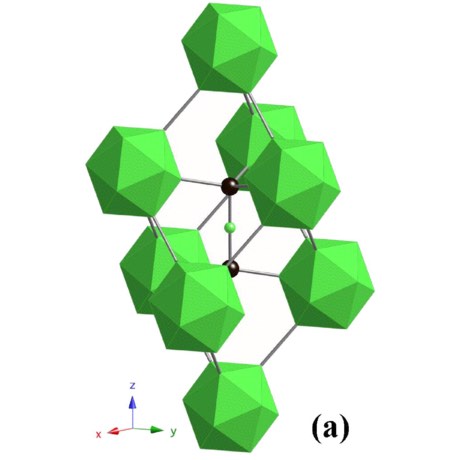
Unit cell of B4C. The green sphere and icosahedra consist of boron atoms, and black spheres are carbon atoms
Researchers at the University of Florida are using XSEDE supercomputers to unlock the mysteries of boron carbide, one of the hardest materials on earth. The material is also very lightweight, which explains why it has been used in making vehicle armor and body protection for soldiers.

The longstanding mystery: The Raman spectra for virgin boron carbide (dashed, purple) compared to the amorphized form of the material (green) indicates significant differences in the two forms of the material. Inset shows proposed mechanistic model for formation of amorphized regions within crystalline material. Supercomputer simulations by a University of Florida team are providing clues to understand how nanoscale deformations contribute to changes in the material’s properties. Credit: High-Pressure Deformation and Amorphization in Boron Carbide in the Journal of Applied Physics (2019) (DOI:10.1063/1.5091795)
The research, which primarily used the Comet supercomputer at the San Diego Supercomputer Center along with the Stampede and Stampede2 systems at the Texas Advanced Computing Center, may provide insight into better protective mechanisms for vehicle and soldier armor after further testing and development.
The study was published last month in an article entitled High-Pressure Deformation and Amorphization in Boron Carbide in the Journal of Applied Physics. The supercomputer access was provided by a grant from the National Science Foundation’s Extreme Science and Engineering Discovery Environment, or XSEDE.
Our research provided new insights and an excellent way of analyzing the root cause of catastrophic failure at high pressure induced by high-velocity impacts,” said University of Florida Professor Ghatu Subhash of Mechanical and Aerospace Engineering. “Although boron carbide has several desirable properties, under high-velocity projectile impacts it suffers from a deleterious phenomenon called amorphization, where its crystal structure collapses to a disordered state in nanometer-sized regions within the materials.”
Amorphization is the precursor for cracks in the armor, which may cause catastrophic failure.
The researchers conducted large-scale and multi-scale modeling of icosahedral-boron rich solids, the class of crystallographic structure to which boron carbide belongs.
Our simulations ran more than three times faster per core when we switched from local workstations to Comet, and today our knowledge pertaining to material behavior of icosahedral ceramics has been elevated to a level that is second to none,” said Amnaya Awasthi, a postdoctoral researcher who co-authored the study.
Source: XSEDE




